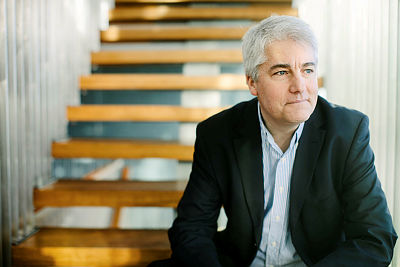Prime Minister Erna Solberg is clearly proud of how Norwegians have withstood the Corona crisis, but now she worries that a new crisis looms. Not all of Norway’s pre-Corona jobs will still be there as the country reopens for business, she warned during the weekend, and economists agree that unemployment looms as the country’s next biggest challenge.

“We have to be honest,” Solberg told members of her Conservative Party’s central board as they met for the first time in person for more than three months. “Some of the jobs that have disappeared won’t be coming back. When the acute health crisis is over, we’ll be left with a jobs crisis.”
It was straight talk from a prime minister who stressed how around 70 percent of the country’s income stems “from folks who work and pay tax.” She also stressed that the private sector is an important source of revenue for the state treasury, on which the public sector relies. An estimated 90 percent of those currently laid off and now facing the loss of their jobs are employed in the private sector.
Norway’s economy is already recovering from the nearly three months of near shut-down imposed on March 12 by Solberg’s government, as a means of preventing the spread of the Corona crisis. The latest numbers from state welfare agency NAV, however, show that around 350,000 Norwegians remain out of work even after many have returned to their jobs as restaurants, hair salons, shops and other service industries re-open. NAV reported on Friday that 170,000 have left its jobless register since the Corona crisis set in, but it’s unclear whether all have returned to their former or new jobs.
High unemployment ‘for many years’
Øystein Dørum, chief economist for Norway’s national employers’ organization NHO, has been warning about the risks of ongoing high employment since late May. Even though there’s been lots of good economic news lately, and many Norwegians remain well-off to the point where they’re even buying boats like never before, Dørum presented some of the most negative predictions. He thinks unemployment will average 6.6 percent this year (high for Norway and up from 2.8 percent in 2019) and only sink to an average 5.5 percent next year and 4.3 percent in 2022.
“There’s reason to believe that unemployment will remain high for many years after this crisis,” Dørum said. It hit 11.2 percent in March, the highest level since the 1930s, and remains high especially in the tourism and transportation businesses. Airlines are among the hardest-hit of all, but Dørum fears new rounds of layoffs within the construction business and other industries, “branches that typically start hurting in the second phase of a downturn.”

Other economic experts predict unusually high unemployment next year as well, perhaps the highest in 15 years. Rune Bjerke, former CEO of Norway’s biggest bank DNB, urges more rounds of government crisis packages to aid business and industry. “We have to try to keep high unemployment from setting in, and offer assistance so that people don’t remain unemployed for a long time,” Bjerke told newspaper Dagens Næringsliv (DN).
Ida Wolden Bache, deputy chief of Norway’s central bank, also worries whether those who’ve been laid off will all be able to return to their jobs. She thinks there’s a clear possibility that many employers will convert layoffs into permanent job terminations.
Nordea Markets’ economic outlook, released along with several others in late May, offered among the more optimistic scenarios when it put unemployment at 3.5 percent at the end of 2021. Its most pessimistic was close to 5 percent.
New opportunities can arise
Local media outlets have recently profiled some innovative Norwegians who have redefined themselves. Newspaper Aftenposten reported how 20-year-old Petter Sakshaug had only worked two weeks in his new job as a cook at The Hub hotel in Oslo when he was laid off. He quickly signed on with employment agency Manpower and got a new job just a day later in the warehouse for the Apotek1 pharmacy chain. DN reported how truck driver Elias Lockert was laid off on a Friday in March and hadn’t even applied for unemployment benefits when his old boss called and hired him to drive for the large Asko grocery wholesaler. He was back working the next Tuesday. There have also been stories about laid-off flight attendants landing new work in the restaurant take-away business, health care or other service sectors.
Farmers, however, have been slow to hire laid-off Norwegians to work in the fields as strawberries and other summer crops ripen. They seem to prefer, despite all the quarantine restrictions, obtaining special permission to fly in farmworkers from Vietnam who have more experience and can be paid much less than even laid-off Norwegians, while those laid off have found they may earn more collecting unemployment benefits. “Norwegian strawberries have to be picked by quick and clever foreigners who accept low pay, so that the Norwegian farmers can compete with Spanish strawberries, which also are picked by low-paid foreigners,” wrote Aftenposten commentator Therese Sollien.
Norway’s seafood industry, the country’s second-largest after oil, is also facing a downturn after the value of seafood exports fell 9 percent in May, to NOK 7.8 billion. It was the second month of decline in a row for seafood, which has been booming for years.

Even though Norway is opening up again and consumer spending is rising, NHO’s Dørum warns the crisis is far from over. Many companies and small businesses still face liquidity problems after sales disappeared almost overnight last spring. Now they face some large payments including already-postponed tax payments and traditional summer holiday pay for employees known as feriepenger. Concerns have been rising that some employers won’t have the cash needed, and they may set off a wave of new bankruptcies that Solberg and her government have been trying to avoid.
She’s getting lots of advice from economists like Dørum and business executives like Bjerke, along with lobbying for tax relief from not least the oil industry. Solberg insisted that Norwegian politicians, still arguing over how much and what kind of tax relief they’ll give the oil industry, will “show some spine” under pressure from the oil lobby. That’s where the most jobs can be lost or retained, but with oil prices rising again on Monday, debate swirls over whether the long-profitable fossil fuel business should be granted much tax relief.
Despite all the ongoing economic concern, Solberg was also clear that the Corona crisis has reminded many Norwegians of just how fortunate they are to live in a country with a huge sovereign wealth fund (fueled by oil revenues over the years), strong social welfare traditions and a good public health care system.
“The crisis has taught us many things about the values of our system,” said Solberg, citing mutual confidence between the population and authorities, strong support for the strict Corona containment measures imposed “and not least that folks have shown themselves to be good neighbours and helpers.” It wasn’t only Norway’s fundamentally strong economy that was important, she noted, and helped the country emerge with among the lowest Covid-19 infection levels and death rates in the world.
“We have stood up for each other when we needed it most,” Solberg said. “In this crisis, Norway has shown itself from its absolutely best side.”
NewsInEnglish.no/Nina Berglund

